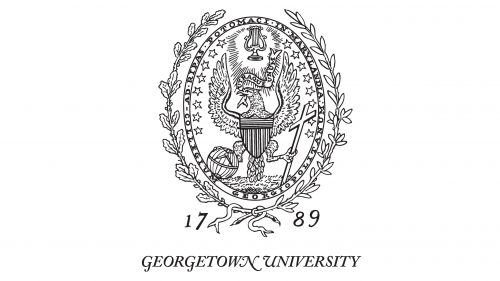 Georgetown University Logo PNG
Georgetown University Logo PNG
Georgetown University is a private educational institution, which was founded in 1789, and is based in Washington DC. The University is considered to be the oldest Catholic educational institution in the United States, as was established in the Jesuit tradition.
Meaning and history
Georgetown University was founded in 1789 by John Carroll, the first archbishop in the United States and a fierce fighter for independence. The founder’s monument adorns the campus to this day. Georgetown University is the oldest Catholic institution in the United States. The university’s Catholic roots are still evidenced by the presence of a theological department and a working chapel in the courtyard. However, all other faculties are exclusively secular and are characterized by a high degree of tolerance and multiculturalism.
Georgetown University has branches in other countries and cities. They were opened in Italy, Qatar, and Turkey. Today, there are more than 7,500 students who are pursuing bachelor’s degrees at this college. There are 11,000 students seeking a master’s degree and a doctoral degree. Many graduates of this institution have achieved tremendous heights and advanced their careers in politics, government, and social life. Twelve heads of state have graduated from Georgetown University, the most famous of whom is Bill Clinton.
The university also has a very strong athletic program, which is composed of 23 men’s and women’s teams in various sports disciplines. The most famous Georgetown Hoyas team is men’s basketball.
What is Georgetown University?
Georgetown University is a private institution of higher education in the United States. GU began as an academic institution in 1789. Georgetown University has an urban campus in Washington, DC. Today GU is one of the top70 universities in the United States.
As for the visual identity, Georgetown University has been very conservative, and still uses its logo, created a long time ago. The main element of the badge is the heraldic seal, which is fully based on the Great Seal of the United States, with an Eagle as the central element. Most American universities use a seal separately from the primary logo, but Georgetown University has made it the star of its identity.
???? – Today
The Georgetown University logo is composed of an ornate emblem, placed above the elegant cursive lettering in uppercase. Both elements are executed in thin and smooth blue lines, which look very classy on a plain white background. The emblem of GU depicts a vertically oriented oval medallion with an eagle holding a cross in one talon, and standing on a globe with the other one. The bird is surrounded by 16 contoured five-pointed stars and enclosed into a double frame with the old-style serif lettering around its perimeter. The medallion is surrounded by a leafy frame, and underlined by an elegant datemark, followed by a logotype.
Athletics
The visual identity of Georgetown Hoyas, the athletic teams of GU, is much more modern and progressive, than the official seal of the University. The badge features a sleek and sharp capital “G”, drawn in dark blue and outlined in calm smooth gold, which created a great contrast when the letter is placed on a white background. The “G” is set in extra-thick lines, with the tail elongated and sharpened, resembling a claw.
Font and color
The italicized serif logotype in the uppercase, which is placed under the seal on the primary badge of Georgetown University, is written in smooth elegant lines, with the tails of some letters elongated and curved. The font, used in this insignia is based on a traditional serif type, like Adobe Caslon Semibold Italic or Janson Regular Italic, but with some contours modified, and some tails added to the letters.
As for the color palette, the logo of Georgetown University is set in calm drop blue over a white background. This combination evokes a sense of reliability and professionalism and shows the GU’s value of its historic legacy and roots.









